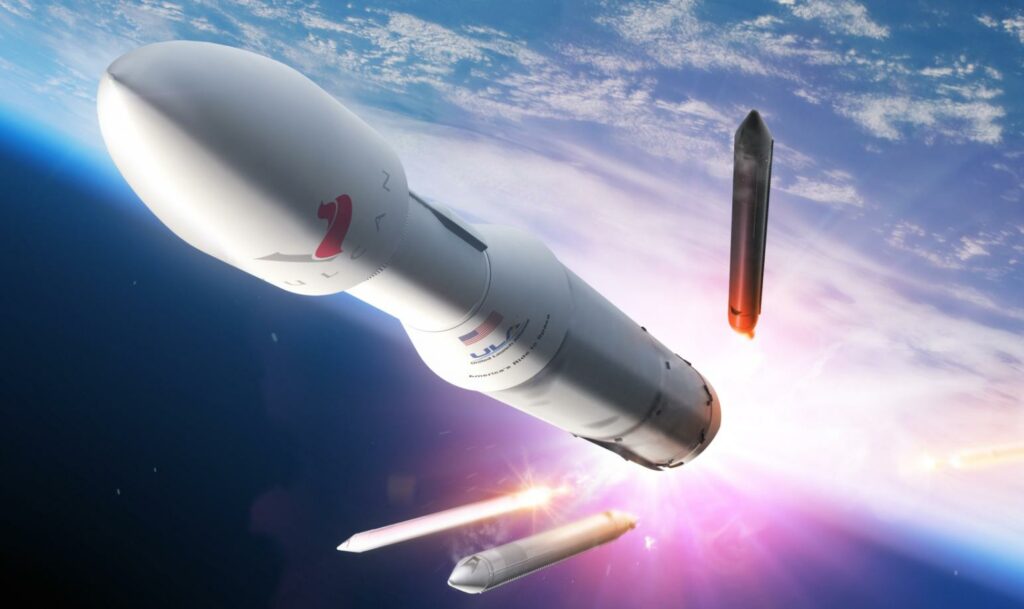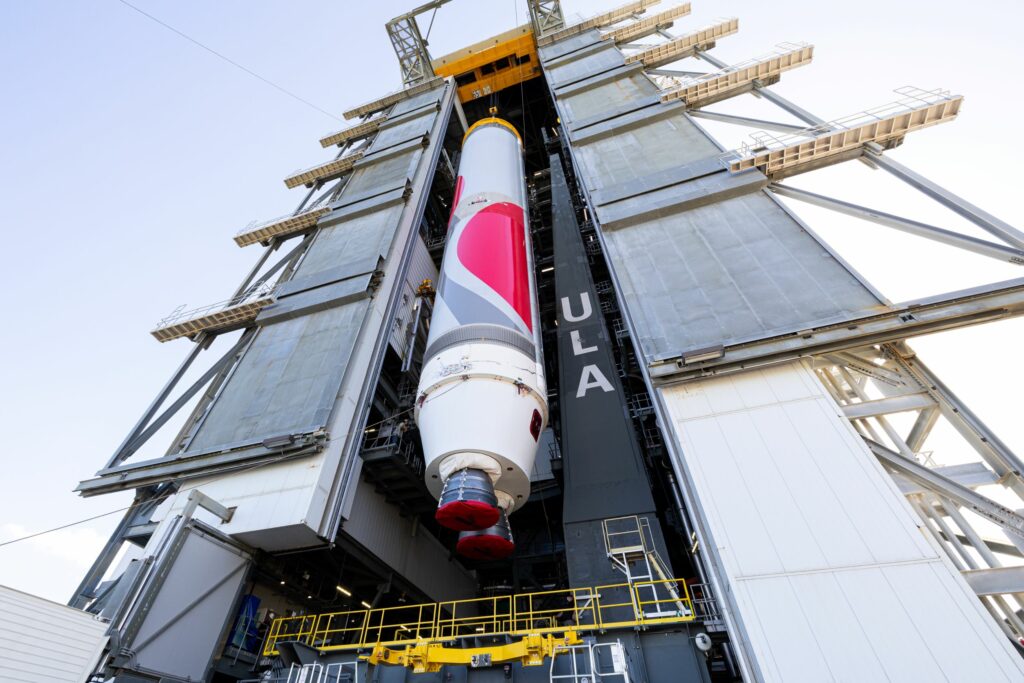During the tests of the upper stage of the Vulcan rocket held on March 30, experts revealed a technical anomaly. It may interfere with the carrier’s debut flight scheduled for May.
History of the Vulcan rocket
The history of the Vulcan rocket began in 2014, when, after Russia seized Crimea, the American government decided to get rid of the dependence associated with Russian RD-180 engines (they are installed on the first stage of the Atlas V rocket) for national security purposes. For this, it was decided to create a new carrier, called Vulcan.

The Vulcan rocket has a two-stage design with the possibility of adding side solid-fuel boosters. Its height is 60 meters, its diameter is 5.4 meters. In its most powerful configuration, the rocket will be able to launch up to 27 tons into low Earth orbit.
The Vulcan first stage is equipped with two BE-4 engines built by Blue Origin. They use methane as fuel and liquid oxygen as an oxidizer. The second stage is equipped with a pair of oxygen-hydrogen engines RL-10.
Vulcan Rocket Problems
At the time of the announcement of the project, the first launch of Vulcan was scheduled for 2020. But later it repeatedly shifted. One of the reasons for the postponements were problems with the development of the BE-4 engine. It was only at the end of 2022 that Blue Origin finally delivered a batch of flight-certified powertrains, which made it possible to begin preparations for launch. In February 2023, engineers completed the assembly of the first instance of Vulcan. This made it possible to make a formal announcement about the date of the first flight of the rocket. It was scheduled for May 4. During its debut mission, Vulcan should send the Peregrine spacecraft built by Astrobotic to the Moon.

However, it is highly likely that Vulcan’s debut will be postponed again. March 30, CEO of launch operator ULA (joint venture of Boeing and Lockheed Martin) Tory Bruno reported an “anomaly” detected during the tests of a test copy of the upper stage of the rocket. Bruno did not specify what exactly the essence of the problem was. But given ULA’s traditionally conservative approach to organizing tests, there is little doubt that the current situation will lead to the postponement of the Vulcan launch for the summer.
Keeping you posted: During Qual testing of Centaur V structural article at MSFC, the hardware experienced an anomaly. This is is why we thoroughly & rigorously exercise every possible condition on the ground before flight. Investigation is underway. Vulcan will fly when complete.
— Tory Bruno (@torybruno) March 30, 2023
It is also worth noting that Sierra Space recently has announced the postponement of the first flight of the Dream Chaser supply spacecraft to mid-December. It will be launched during the second Vulcan mission. The postponement of the Dream Chaser launch also indicates that the first flight of the new carrier will take place no earlier than the summer of 2023.
Follow us on Twitter to get the most interesting space news in time
https://twitter.com/ust_magazine

